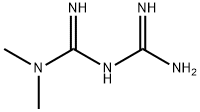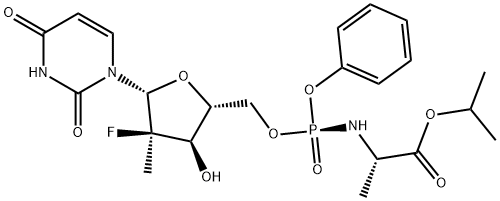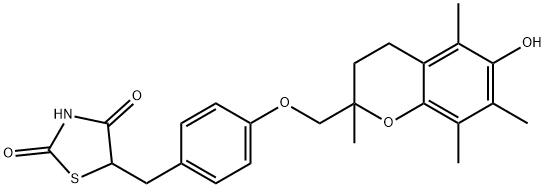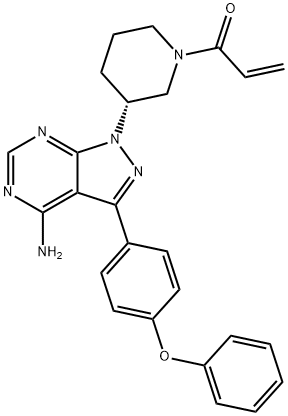PRODUCT Properties
| Melting point: | 199-200 °C |
| Boiling point: | 229.23°C (rough estimate) |
| Density | 1.0743 (rough estimate) |
| refractive index | 1.5760 (estimate) |
| storage temp. | Keep in dark place,Inert atmosphere,Room temperature |
| solubility | Acetonitrile (Slightly), Aqueous Acid (Slightly), Dichloromethane (Slightly) |
| form | Solid |
| pka | pKa 2.8(H2O,t =32) (Uncertain) |
| color | White to Light Brown |
| Water Solubility | Water: 50 mg/mL (387.12 mM) |
| BCS Class | 3 |
| InChI | InChI=1S/C4H11N5/c1-9(2)4(7)8-3(5)6/h1-2H3,(H5,5,6,7,8) |
| InChIKey | XZWYZXLIPXDOLR-UHFFFAOYSA-N |
| SMILES | C(=N)(N(C)C)NC(=N)N |
| CAS DataBase Reference | 657-24-9(CAS DataBase Reference) |
| EPA Substance Registry System | Imidodicarbonimidic diamide, N,N-dimethyl- (657-24-9) |
Description and Uses
The study of metformin and its hypoglycemic effects originated from the study of goat’s rue plants, also known as Galega officinalis(French lilac). Goat’s rues are native plants in the Middle East and introduced to Europe later and have been used as forage and ornamental plants throughout the world, including China. As early as in the Middle Ages in Europe, it was found that goat’s rues could ease polyuria, which is one of the typical symptoms of diabetes. While goat’s rues were used to treat a variety of other diseases in the Middle Ages, it was found to cause poisoning symptoms in livestock. Goat’s rues are still used as medical plants at present, mainly for diabetes, diuretic, hepatoprotection, aiding in digestion and promoting lactation, etc. In China, goat’s rues were recorded first in the dictionary of Chinese seed plants and mainly used for the treatment of diabetes. However, because of high toxicity, it is rarely used in traditional Chinese medicines at present.
non-insulin dependent diabetes mellitus
Safety
| Symbol(GHS) |  GHS07 |
| Signal word | Warning |
| Hazard statements | H302 |
| Precautionary statements | P264-P270-P301+P312-P330-P501 |
| Toxicity | LD50 oral in mouse: 1450mg/kg |





